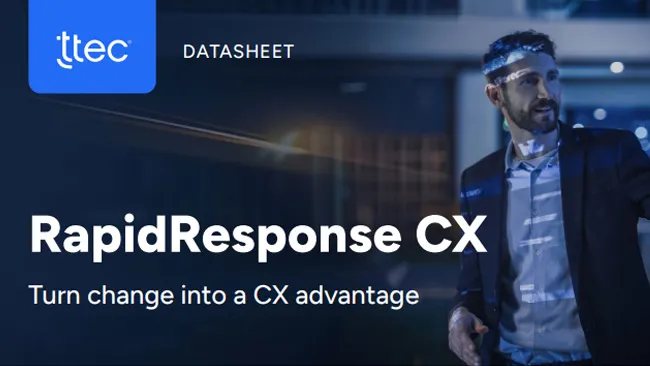More and more consumers are increasingly hyper-connected, shifting their interactions with and about brands online. As a result, companies must redefine social as a platform that enables conversations with those consumers to build engagement and drive customer loyalty. This means social media strategy must transition from a one-dimensional broadcast device used to drive promotions into a two-way communications channel that enables meaningful and personalized dialogue.
Similar to an in-person conversation, social strategy entails more than just speaking; it also requires listening. Imagine if you attended a cocktail party and you met someone for the first time and listened intently while this person talked, but never allowed you to respond. It wouldn't be long before you asked yourself, "What's wrong with this picture?" In the social realm, one-sided conversations have become a common problem, spurred by companies sending out messages and promotions, but leaving out the opportunity for interaction. Customers don't want companies talking at them. They expect companies to listen to them and to engage them in conversation.
Forward-thinking business leaders understand howl everaging social as part of their organization's multichannel engagement strategies is an intelligent business move. These executives also know that for social to succeed as an effective engagement device, it cannot be siloed; it must be shared across the enterprise with a designated budget and staff who are accountable for monitoring, listening, and engaging with customers in social channels.
For organizations looking to evolve their social strategies into customer conversation and feedback channels, I propose four action items:
1. Designate senior-level employees to manage social.
Putting someone in charge of social breaks down a common barrier to implementing any social plan: accountability. Therefore, designate a senior-level employee responsible for the enterprisewide social strategy. This person should have the power to make investment decisions, the ability to foster teamwork, and acumen to work cross-functionally.
Additionally, don't assign interns to manage daily social conversations. It's a dangerous proposition, especially for a multimillion-dollar brand. I recommend designating employees who have experience working with social tools and understand how to represent your brand in the dynamic social world. In fact, I spoke to an executive at an enterprise company recently whose management said it wasn't hiring anyone in marketing without an intimate knowledge of social media and an understanding of how to interact on social sites. These employees should also be influencers, people who can easily connect with their coworkers to encourage social activity and can serve as a resource for those who are just getting started.
These social directors should define the "social conversations" occurring about their brand, articulate the implications and benefits of engaging in social, and then set the policies and guidelines for their organizations to follow.
2. Use social yourself.
Many executives understand the value in engaging in a transparent dialogue about their brands with customers via social media, but others still are not sold on the value of leveraging this medium.
Earlier this year eMarketer reported that 50 percent of U.S. CMOs at Fortune 1,000 companies said they launched a corporate blog because "it's the cost of doing business today." And a 2010 study from Socialcast reveals that 50 percent of executives use social media regularly. While 50 percent is promising, the percentage of executives using social media is not nearly where it should be.
Part of the problem is that it's daunting for people to embrace what they don't understand. For executives who need convincing, start small. Encourage them to spend a certain amount of time each day experimenting with social by posting short conversations, maybe first on internal sites. Once they feel comfortable, they will begin to appreciate the many benefits gained from using social with employees and customers, and once they understand the power of social for themselves, they will be better prepared to integrate it into their business in an appropriate way.
3. Don't let legal drive the social strategy.
I've spoken to numerous organizations whose social strategies have yet to take off because they're mired in their legal departments, which may instill restrictive policies and which seem to find too many ways to say "no" to social interactions. I find that successful social strategies are led by public relations, customer service, or marketing departments, or a combination thereof.
One of the goals of a strategic social media policy is to actively engage customers while keeping sensitive information confidential, as in the financial services industry, and to regulate certain employee behaviors and comments when using social—to help protect the company from lawsuits and interactions that can negatively affect the brand. Therefore, when establishing guidelines and policies for social customer interactions, I advise customer-facing departments to work in partnership with legal to develop a plan that addresses the needs of all stakeholders.
4. Hire experts to help.
To avoid the steep learning curve of social communications, companies may want to consider partnering with a creative agency or strategy firm to rapidly develop their social customer engagement strategies.
Look for a firm that has proven wins in crafting social policies, can provide best practices, can demonstrate a proven record of being social themselves, and can guide companies on the path to becoming social. Once you find a firm that fits with your goals, ask the company to help assess your social media strategy and to work with you on developing the customer experience roadmap. Also, ask the firm to help you select appropriate monitoring tools and put a plan in place to initiate the required organizational changes. Finally, ensure that the firm helps to establish the appropriate metrics to measure the effectiveness of social for your organization.
Becoming an open and social organization that's adept at creating an ongoing dialogue with its customers takes time and hard work, and is more complex than some executives realize. Social is no longer an experiment without a budget, strategy, or staff. Companies must incorporate social customer experience strategies into their enterprisewide activities and corporate plans, not treat social as an afterthought. Done well, an effective social strategy will deliver significant benefits for customer acquisition, engagement, and loyalty.
















